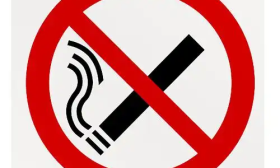The Surprising Link Between Tobacco Use and the Spread of Skin Hypopigmentation
We often discuss the well-known dangers of tobacco, such as lung cancer and heart disease. But there's a quieter, more visible effect that doesn't get as much attention: its impact on our skin. Specifically, a growing body of evidence suggests that tobacco use can contribute to the enlargement of hypopigmented spots on the skin. These are areas where the skin loses its normal color, becoming lighter or white. If you've noticed such spots and are a smoker or use tobacco products, understanding this connection could be a crucial step for your skin's health.
First, let's clarify what we're talking about. Hypopigmentation is a general term for any condition where the skin produces less melanin, the pigment that gives skin its color. Common conditions involving these light spots include vitiligo, pityriasis alba, and post-inflammatory hypopigmentation. The topic of our discussion today is not that tobacco necessarily causes these conditions from scratch, but rather how it can act as a potent aggravating factor, leading to the expansion of existing spots or the emergence of new ones.
So, how does a habit like smoking lead to the enlargement of skin hypopigmented spots? The primary culprit lies in the complex chemical cocktail found in tobacco smoke and its profound systemic effects.
The Internal Assault: Nicotine and Oxidative Stress
When you inhale tobacco smoke, nicotine and thousands of other chemicals enter your bloodstream. This triggers a cascade of biological events. One of the most significant is the massive production of free radicals. These are unstable molecules that cause oxidative stress, damaging cells throughout the body. Our skin's melanocytes—the specialized cells responsible for producing melanin—are particularly vulnerable to this kind of damage. When these cells are damaged or destroyed by oxidative stress, they cannot produce pigment, leading to the formation or enlargement of hypopigmented areas. Therefore, one key mechanism behind tobacco-induced skin depigmentation is this relentless cellular assault.

Constricting Blood Flow and Starving the Skin
Nicotine is a powerful vasoconstrictor. It causes the tiny blood vessels, or capillaries, in the skin to narrow. This reduces blood flow to the skin's surface, depriving it of essential oxygen and vital nutrients. For melanocytes to function correctly, they need a steady supply of these elements. A nutrient-starved environment can weaken these cells, impair melanin synthesis, and ultimately contribute to the progression of white skin patches. This compromised blood flow also slows down the skin's natural healing and regeneration processes, making it harder for the skin to recover from any minor trauma or inflammation that could itself trigger hypopigmentation.
The Inflammatory Fire
Tobacco smoke is a pro-inflammatory agent. It sparks a chronic, low-grade inflammatory response throughout the body. Inflammation is a known trigger for many skin conditions, including those involving pigment loss. Chemicals in tobacco can disrupt the immune system's balance, potentially leading it to attack the body's own cells. In conditions like vitiligo, which is an autoimmune disorder, this effect can be particularly damaging. Smoking can essentially pour fuel on the fire, encouraging the immune system to target and destroy melanocytes, thereby accelerating the spread of hypopigmented lesions.
The Direct Contact Factor
For those who use smokeless tobacco, like chewing tobacco or snuff, the risk is even more direct. The constant placement of the tobacco product against the skin inside the mouth can lead to a localized condition known as smoker's melanosis, but it can also have the opposite effect. The constant irritation and chemical exposure can damage the melanocytes in that specific area, leading to oral tobacco leukoplakia and hypopigmentation. This direct contact provides a clear, observable example of how tobacco chemicals can disrupt local skin pigmentation.
Addressing the Domino Effect: Related Concerns
This phenomenon doesn't exist in a vacuum. The enlargement of hypopigmented spots due to tobacco use brings with it a set of related issues that are important to address.
- Delayed Healing and Treatment Resistance: The same vasoconstriction and nutrient deprivation that contribute to the problem also mean that if you are undergoing treatment for a condition like vitiligo, tobacco use can significantly hinder your progress. Treatments like phototherapy or topical medications work by stimulating melanocytes. If those cells are starved of oxygen and nutrients, their response will be sluggish at best. This is a critical point for anyone seeking effective management for tobacco-aggravated vitiligo.
- Increased Photosensitivity: Hypopigmented skin has less melanin, which is our natural protection against the sun's ultraviolet (UV) rays. This makes these spots highly vulnerable to sunburn. The chemicals in tobacco can further break down collagen and elastin, the skin's support structures, leading to thinner, more fragile skin. This combination creates a perfect storm for severe sun damage on the already compromised areas, increasing the risk of skin cancers. Protecting these spots with sunscreen becomes non-negotiable.
- Psychological and Social Impact: The visible nature of spreading white spots can cause significant emotional distress, affecting self-esteem and social interactions. Understanding that a modifiable habit like tobacco use could be a contributing factor can be a powerful motivator for change. Quitting tobacco then becomes not just a lung health decision, but a concrete step towards taking control of one's skin appearance and overall well-being.
What Can You Do? A Path Forward
The connection between tobacco and the enlargement of hypopigmented spots might seem daunting, but it is also a source of hope. Because unlike genetic predisposition, tobacco use is a factor you can control.
- The Single Most Important Step: Smoking Cessation. The most effective strategy to halt the progression of tobacco-linked skin depigmentation is to quit using tobacco products entirely. Stopping the influx of harmful chemicals allows the body to begin repairing the damage. Blood flow can normalize, oxidative stress can decrease, and systemic inflammation can subside. This creates a much more favorable environment for your melanocytes to potentially recover and for treatments to work effectively.
- Consult a Dermatologist. If you have hypopigmented spots, it is essential to see a dermatologist for an accurate diagnosis. They can determine the exact condition and rule out other causes. They can also discuss the latest treatment options for hypopigmentation aggravated by smoking and create a personalized management plan for you. Be open with your dermatologist about your tobacco use; this information is vital for them to provide the best possible care.
- Adopt a Skin-Nourishing Lifestyle. Support your skin's health from the inside out. A diet rich in antioxidants (found in colorful fruits and vegetables) can help combat the residual oxidative stress. Staying well-hydrated is crucial for overall skin function. And as mentioned, diligent sun protection is absolutely mandatory to protect the vulnerable hypopigmented areas.
- Be Patient and Consistent. Skin recovery is a slow process. You will not see changes overnight. However, every day without tobacco is a day your body is working to heal itself. Consistency with your dermatologist's treatment plan and healthy lifestyle choices will yield the best long-term results in managing the size and appearance of your hypopigmented spots.
In conclusion, the link between tobacco use and the enlargement of skin hypopigmented spots is a compelling and scientifically supported one. Through mechanisms like oxidative stress, vasoconstriction, and chronic inflammation, tobacco creates an internal environment that is hostile to the pigment-producing cells of our skin. By recognizing this connection and taking proactive steps, especially towards quitting tobacco, you are not just investing in your long-term internal health, but you are also making a powerful commitment to the health and appearance of your skin. Your skin has an incredible ability to heal when given the right support, and removing tobacco is one of the greatest gifts you can give it.












